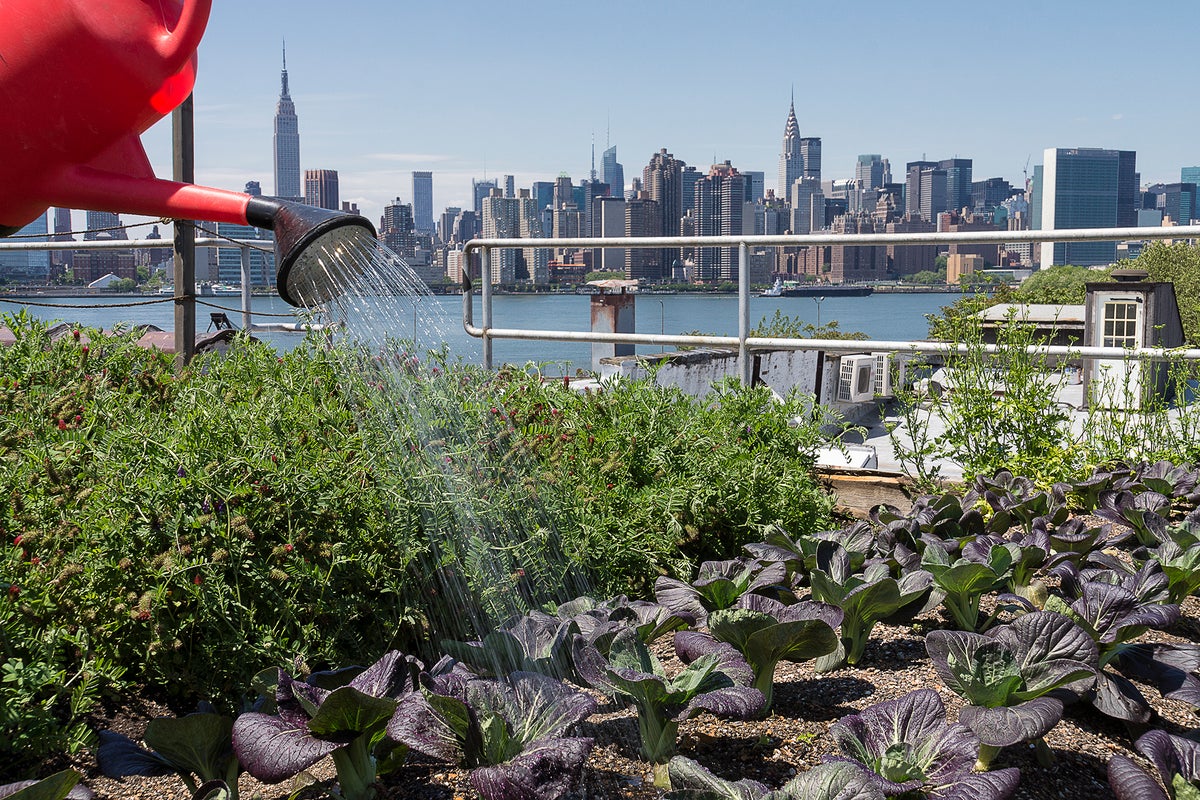A Biased View of City Blooming
A Biased View of City Blooming
Blog Article
5 Easy Facts About City Blooming Described
Table of ContentsThe Best Strategy To Use For City BloomingThe 20-Second Trick For City BloomingThe Single Strategy To Use For City BloomingHow City Blooming can Save You Time, Stress, and Money.Facts About City Blooming Uncovered
Fascinated in growing food for sale in the City of Chicago? Below is a listing of often asked questions concerning the rules and guidelines that cultivators ought to consider when intending a metropolitan agriculture job.
The zoning modification does not modify any kind of various other codes handling composting, building permits, acquiring or renting City owned residential property, company licenses or ecological contamination. There are existing codes that regulate these concerns and they continue to be completely effect and may apply to your task. Community yards are generally had or handled by public entities, civic organizations or community-based companies and kept by volunteers.
Urban ranches expand food that is meant to be sold, either on a nonprofit or for-profit basis. Due to their industrial function, urban farms need a business license.
The Basic Principles Of City Blooming
The quantity of compost material can not go beyond 25 cubic yards at any given time according to the criteria in 7-28-715 of the City's Municipal Code. Since the soil at the majority of brand-new yard sites needs changing, compost, dirt, timber chips, or other products can be acquired to create or enhance the growing room.

If a structure license is needed then the hoophouse will be taken into consideration an accessory building. You can learn more concerning the building permit needs by contacting the Department of Structures. The 25,000-square-foot dimension restriction is planned to avoid a single area yard from dominating an offered block or interfering with the block's existing domestic or commercial character.
The restriction does not put on gardens found in Public Open Room (POS) districts. Can there be even more than one neighborhood yard that is 25,000 square feet on a single block? Yes. The dimension limit relates to individual yards, not to individual blocks. No. Fencing is not required, nevertheless, gardens that have large parking lot might be called for to install fence or other landscape design functions.
10 Simple Techniques For City Blooming
B1 & B2 areas require that all industrial usage activities be carried out inside. R districts restrict industrial task. The guidelines reflect the function and intent of the Zoning Code. Is secure fencing required for metropolitan farms? Yes. Fencings may be required, in addition to landscaping and testing, for sure parking areas and exterior job or storage areas relying on location and the certain activity occurring.
Yes. Urban farms require building licenses and zoning approvals prior to building. Various other forms of city review may be required depending upon certain structures, activities, size, landscaping, licensing, public heath and stormwater administration concerns. Much of these needs are identified in the job style or allowing process, nonetheless, the candidate may be liable to independently recognize specific licenses or permits that may be called for.
Yes. The kind of certificate is determined by what is happening at the website. The Department of Company Matters and Consumer Defense can help identify the particular sort of organization license that's needed. Yes. Off road car parking is required for most business tasks in Chicago. The needed number of garage is based upon the variety of employees working with website and not the square video footage of the growing area.
The Only Guide for City Blooming

Yes. A city farm can offer compost material created on website, nevertheless, the procedure has to follow the laws in 7-28-715 of the Chicago Municipal Code. Yes. Aquaponic systems are permitted inside your home on urban ranches in many zoning areas. Nonetheless, a zoning evaluation and building authorization is required in order to mount structures or systems and a business permit is called for as described above.
As much as 5 hives or nests of honey may be maintained as an accessory usage. Nevertheless, beekeepers have to register with the Illinois Department of Agriculture. To find out more about the proposed zoning amendment you might contact the Department of Housing and Economic Advancement, Bureau of Preparation and Zoning at 312.744.8563.
Farming in cities and urban areas An urban ranch in Chicago. Urban farming describes different methods of cultivating. https://peatix.com/user/22844047/view, processing, and dispersing food in city locations. The term likewise relates to the area tasks of animal husbandry, tank farming, beekeeping, and gardening in a city context. Urban farming is distinguished from peri-urban farming, which happens in country locations at the side of suburbs.
Indicators on City Blooming You Need To Know
It can entail a movement of organic cultivators, "foodies" and "locavores", who look for to develop social media networks started on a shared values of nature and area holism. These networks can develop using formal institutional support, coming to be integrated right into neighborhood community planning as a "change town" movement for lasting metropolitan growth.
The a lot more direct accessibility to fresh vegetable, fruit, and meat products that may be realised via metropolitan farming can improve food security and food safety and security while lowering food miles, causing lower balcony and patio garden design greenhouse gas exhausts, therefore contributing to environment adjustment reduction. A few of the first proof of metropolitan agriculture comes from Mesopotamia.
Report this page